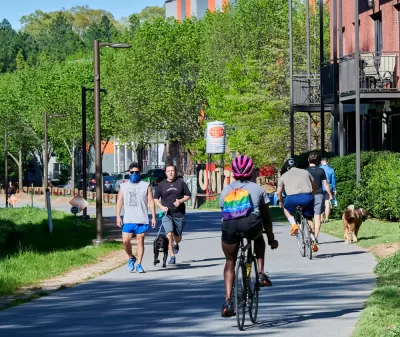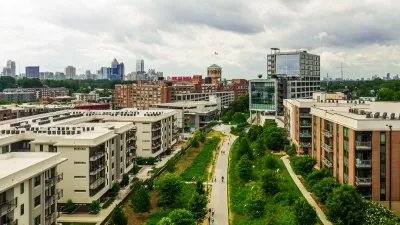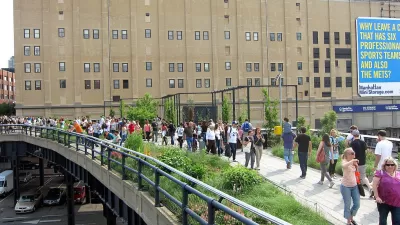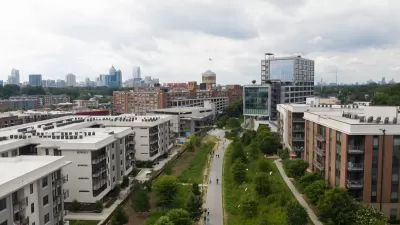For one author, the key is focusing on affordable housing from the start.

Writing in The Conversation, author of Red Hot City: Housing, Race, and Exclusion in Twenty-First Century Atlanta Dan Immergluck describes how “planning and policy decisions [in Atlanta] have promoted a heavily racialized version of gentrification that has excluded lower-income, predominantly Black residents from sharing in the city’s growth.”
In particular, Immergluck faults the Atlanta BeltLine multiuse trail, a repurposed former railway corridor that has in some ways revitalized the surrounding area at the expense of low-income households who were pushed out. Immergluck calls this “green gentrification” that occurs when new green spaces and park facilities lead to higher housing costs and displacement. “If cities fail to prepare for these effects, gentrification and displacement can transform lower-income neighborhoods into areas of concentrated affluence rather than thriving, diverse communities.”
The BeltLine, first proposed in the early 2000s, became a transformative project for Atlanta. In 2007, Immergluck found that property values near the BeltLine were indeed going up faster than in other areas. “This meant that property taxes rose for many lower-income homeowners, and landlords of rental properties were likely to raise rents in response.”
As the article explains, “Rather than focusing on securing land for affordable housing when values were low, Atlanta BeltLine, Inc. prioritized building trails and parks.” Pledges to support affordable housing went unfulfilled. “In 2017 the Atlanta Journal-Constitution ran a high-profile investigative series documenting that the BeltLine had produced just 600 units of affordable housing in 11 years – far off the pace required to meet its target of 5,600 by 2030.”
For Immergluck, the lesson for other cities and developments is clear. “In my view, the most important takeaway is the importance of front-loading affordable housing efforts in connection with major redevelopment projects.” He also suggests limiting property tax increases for low-income homeowners and giving tax breaks to landlords who keep rental housing units affordable.

Study: Maui’s Plan to Convert Vacation Rentals to Long-Term Housing Could Cause Nearly $1 Billion Economic Loss
The plan would reduce visitor accommodation by 25,% resulting in 1,900 jobs lost.

North Texas Transit Leaders Tout Benefits of TOD for Growing Region
At a summit focused on transit-oriented development, policymakers discussed how North Texas’ expanded light rail system can serve as a tool for economic growth.

Why Should We Subsidize Public Transportation?
Many public transit agencies face financial stress due to rising costs, declining fare revenue, and declining subsidies. Transit advocates must provide a strong business case for increasing public transit funding.

How to Make US Trains Faster
Changes to boarding platforms and a switch to electric trains could improve U.S. passenger rail service without the added cost of high-speed rail.

Columbia’s Revitalized ‘Loop’ Is a Hub for Local Entrepreneurs
A focus on small businesses is helping a commercial corridor in Columbia, Missouri thrive.

Invasive Insect Threatens Minnesota’s Ash Forests
The Emerald Ash Borer is a rapidly spreading invasive pest threatening Minnesota’s ash trees, and homeowners are encouraged to plant diverse replacement species, avoid moving ash firewood, and monitor for signs of infestation.
Urban Design for Planners 1: Software Tools
This six-course series explores essential urban design concepts using open source software and equips planners with the tools they need to participate fully in the urban design process.
Planning for Universal Design
Learn the tools for implementing Universal Design in planning regulations.
City of Santa Clarita
Ascent Environmental
Institute for Housing and Urban Development Studies (IHS)
City of Grandview
Harvard GSD Executive Education
Toledo-Lucas County Plan Commissions
Salt Lake City
NYU Wagner Graduate School of Public Service





























